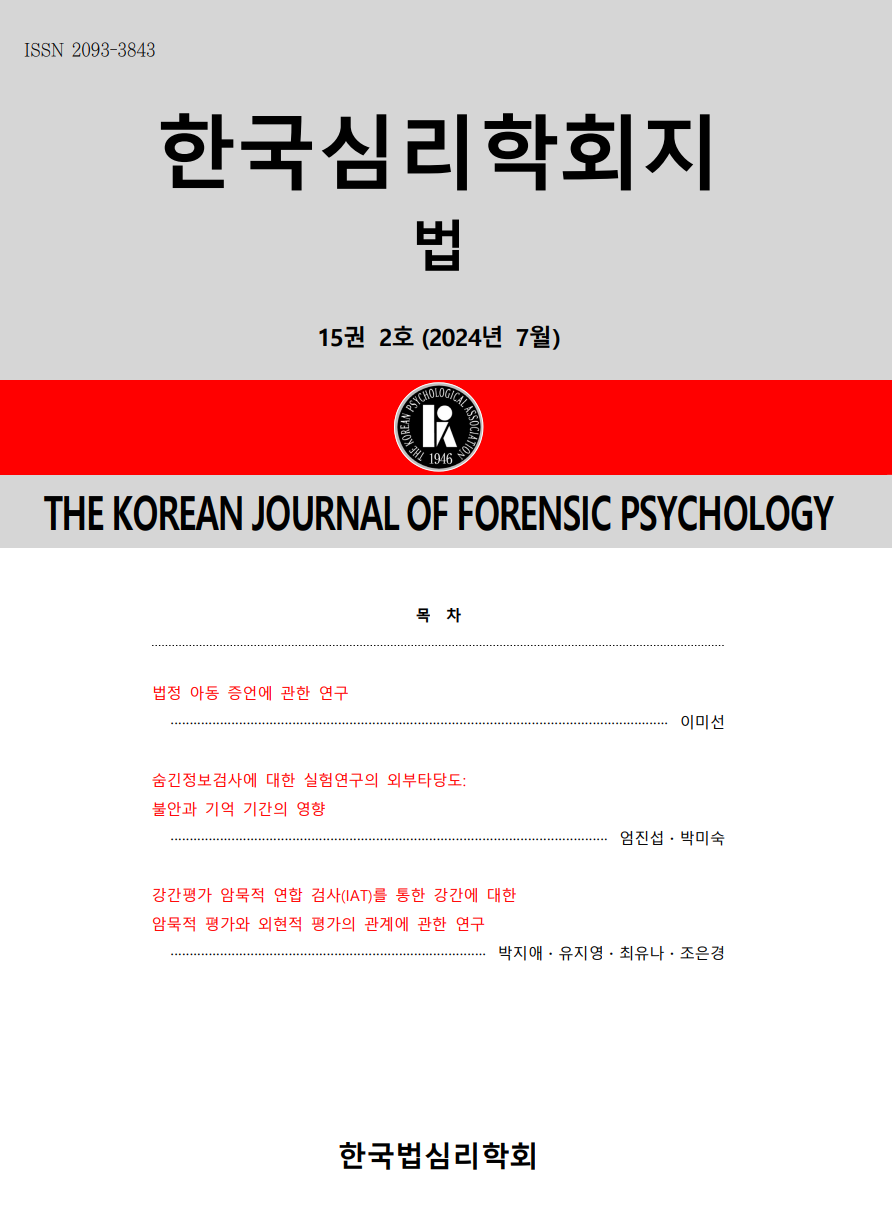open access
메뉴
open access
메뉴 ISSN : 2093-3843
ISSN : 2093-3843
Although Korean government has been trying to resolve the sex crime against children, adolescents, disabled people, and adult women, sex crime has been still increasing and more brutalized. The main cause would be the policy that only focuses on punishment, not prevention or police investigation. To figure out how police can deals effectively with sex crime, this study first examines the characteristics of each different types of sex crime, such as sex crime against children, adolescents, and typical form of sex offenses. Next, this study investigates how another countries, such as USA and UK, make an endeavor to enhance efficiency of police investigation and conviction rates. In addition, we introduces Anti-grooming laws implemented in such countries in order to watch out sex crime against children even internet activities. Finally, this study sheds a light to policy makers and police investigators, who tries to reduce sex crime and to protect potential victims.
Risk assessment is a means of determining the ‘risk’ an offender poses in terms of future offending behavior. Against the backdrop of offenders repeating criminal acts and being reimprisoned, a case will be made here that by utilizing standardized, evidence-based risk assessment tools, an offender can be more effectively and efficiently treated and supported during the period of contact with the criminal justice system. To support this argument, this article starts with the evolution of risk assessment, and continues to describe the key model and empirical base driving this initiative, including the positive outcomes stemming from adhering to the principles of effective treatment, those of risk, need, and responsivity, as well as when using the Level of Service (LSI) instruments to predict general recidivism. While advising caution regarding instrument applicability to other populations, this review indicates that empirically-supported risk assessment tools can better service the offending client, the criminal justice professional, and the public at large.
The present study analyzed the perspectives of empirical science toward the standard of proof for criminal trials (“Beyond Reasonable Doubt”) as reflected on the studies that have been conducted to understand the qualitative as well as quantitative meaning of the standard. From this analysis, two implications emerged: (1) The theories and knowledge acquired through psychological studies of lay individuals can be used to understand judicial decision-making; (2) laypeople’s standard of proof for criminal trials may be higher than that of judges so that jurors may commit type-1 error less than would the judges in the long run. Based on the two implications, how to approach to the judge-jury difference, albeit small, in criminal fact-finding was discussed.